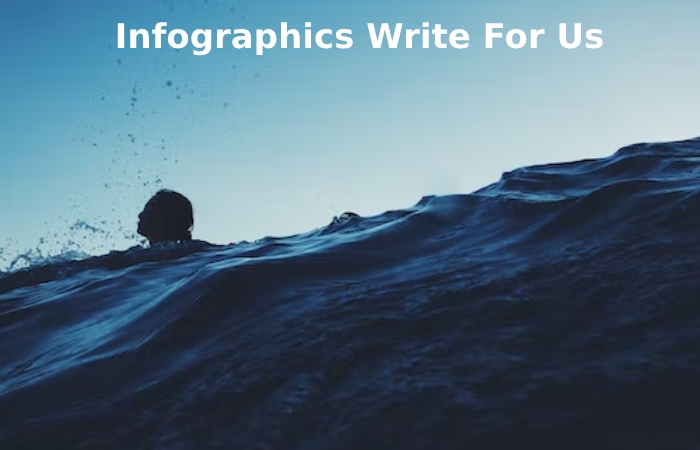Infographics Write For Us – Infographics are a practical resource that provides concrete and valuable data, but what is the ideal way to present the information? What types of infographics will serve you to communicate your company’s internal or external affairs?
Here you will see the different types of infographics that you can make and how to choose the most suitable one to achieve your goals. Don’t complicate yourself anymore. We’ll help you figure it out so you can create graphic materials that help your audience better understand a specific topic.
What are infographics for?
According to our State of Marketing Report, digital image content, such as infographics, ranks third among the most used marketing resources and the one that reflects the best response results among Internet users.
If these data still do not convince you, we give you a couple of extra benefits:
- They send out a more transparent and easier-to-understand message: the infographics synthesize the topics in an entertaining and didactic way. Remember that the human brain retains 80% of what it sees, while only 20% of what it reads and 10% of what it listens to.
- Drive traffic: Increase views and interactions because a Tweet with an image link has a 200% response rate compared to a Tweet with just text.
- They improve your brand’s positioning: when you generate valuable content, you enhance your quality as an expert in front of the public.
The infographics format is as varied as the topics you want to address. So, this list is based on the content to be treated to carry out a correct visual organization of the graphic elements. Choose the one that best suits what you want to communicate to your audience, and use your creativity to make it attractive.
1. Informative infographic
Although this type of graph arose in journalism, it is convenient to explain any event or event. If your purpose is to offer timely information or a concept, you can develop an informative infographic like the one we show you in the example below.
Characteristics of an informative infographic
We share some characteristics that an informative infographic should meet to achieve its objective:
- Statistics/complex data that reinforce the information
- clear and concise information
- Visual elements that accompany the information
- Topic categorization
When to use an informational infographic
An informative infographic can be handy when you have to explain a topic that may be complex, and the summary of information helps to clarify the most essential points. In the same way, it can also be valuable when it is necessary to disseminate some critical information that requires a quick understanding.
2. Product infographic
When the intention is to publicize a product or service, this infographic is helpful to present the product’s characteristics since it helps to emphasize what is most relevant. It is used to describe the fundamental aspects of a product. By highlighting the qualities or attributes with brief concepts and high-quality images, you can give an idea of what that product or service is like and how it works.
Characteristics of a product infographic
- Large, high-quality images
- Easy-to-read typography
- Bright colours relevant to the product and brand
- Arrows or connectors that indicate which part of the product is being discussed
- Magnification of small parts of the product for better visualization
When to use a product infographic
Product infographics can be handy when you want to highlight both the internal and external characteristics of a product and make them more accessible for users to understand.
3. Sequential infographic
In this chart class, you will show a sequence in an organized way. It will be ideal when, for example, you want to expose how your products work or a purchase method.
Characteristics of a sequential infographic
- List-like structure
- use of icons
- consecutive images
When to use a sequential infographic
Use this type of infographic if you want to develop guides or quick instructions, and the goal is to summarize that information in steps.
4. Scientific infographic
It is a type of didactic infographic to facilitate teaching scientific topics, but it does not limit its use to purely academic purposes.
Characteristics of a scientific infographic
- Blocks that strategically separate the information
- Numbers or large letters that highlight a specific fact
- Icons that accompany the information
- Information sources
When to use a scientific infographic
Use it to explain to your client complex topics containing concepts, terms or technicalities if your company belongs to a specialized industry.
5. Biographical infographic
This type of infographic describes the life and work of a character in a few words and, in some cases, uses icons that help to represent some aspects, such as their studies, nationality and some activities, among others. Use it to talk about the founder of your company or leading researchers in your industry.
Characteristics of a biographical infographic
- Image or visual references of the person described
- Icons that highlight relevant points of information
- Timeline highlighting important events
- Information sources
When to use a biographical infographic
When it is necessary to talk about a character succinctly and highlight the most essential thing in his life, this resource is of great help to explain who that person is or was.
6. Geographic infographic
These graphics are used to locate the place of an event using maps. They can be used to show a location or expansion network.
Characteristics of a geographic infographic
- Infographic headline showing what it will be about
- Highlighted map area to be discussed
- connectors or arrows
- Numbers indicating relevant data
- Use of different colours to separate the information well
When to use a geographic infographic
If your objective is to indicate where an event or series of events occurred or will take place or trace a path or stay of a person or object, you can create a geographic infographic.
7. Process infographic
This type of graph proposes a visual and conceptual scheme that allows one to understand a process step by step and some event or topic. It is commonly presented in the form of diagrams or flows.
Characteristics of a process infographic
- Visual elements such as icons that represent the points of each process
- Diagrams or flows that provide dynamism to the infographic
- Well-defined and clear steps
- List of steps to follow with numbers
When to use a process infographic
If the challenge of your work project involves explaining a process, then use a process infographic where you can list each of the stages that comprise it.
It is also useful when you want to represent, for example, a production cycle or show the steps to make a product.
8. Chronological infographic
This infographic, also known as a timeline infographic, shows a succession of facts or data respecting a temporal progression. It is a way of recounting a series of milestones in an orderly manner.
The themes or issues can be about evolutionary processes, before and after changes, innovations or evolutions over time.
Characteristics of a chronological infographic
- Interesting data
- well structured information
- Visual elements that accompany the information
- Connectors that guide the reader
- Bars or blocks that separate one fact from another
- Timeline
When to use a timeline infographic
If your objective is to show the trajectory or evolution of a product, service, company or scientific advance, you can explain it through a chronological infographic.
9. Statistical infographic
Its primary function is to graphically simplify numerical information. Therefore, it represents trends or statistical results with pie charts, bars, tables, or lines to establish quantities, percentages, or coordinates.
Characteristics of a statistical infographic
- Hard data/statistics
- Information sources
- Graphics
- Representative image of the subject
- Icons relevant to the information
- Summarized information in clear points
When to use a statistical infographic
Suppose you want to show quantified data about your brand or have researched a topic of interest to your audience that contains statistics. In that case, you can offer that information through this infographic.
10. Comparative infographic
Comparative infographics are intended to highlight the differences between some elements or variables. Most of the time, they show tables with contrasting aspects.
Characteristics of a comparative infographic
- Question or statement that indicates which comparison is made
- Tables or blocks that separate the categories to differentiate
- Image representative of the information
- Summarized and clear data
- Categories to compare
- Sources
When to use a comparative infographic
Use this type of infographic when it is necessary to establish differences or similarities between various elements; for example, when comparing your product’s benefits with the competition’s offer.
11. Journalistic or investigative infographic
Unlike information infographics, journalistic or investigative infographics try to explain a more complex event by converting its most essential actors and the consequences of what happened into images.
Sometimes he will talk about something that has already happened and is over. In others, it will focus on something that is constantly evolving, such as monitoring a media trial, technological or scientific research of interest to the public, or the development of a process that affects a city or country.
Characteristics of a journalistic or investigative infographic
- Chronology of events
- true information
- Sources
- visual elements
- Graphics
- connectors
- Highlighting of key images
When to use a journalistic or investigative infographic
Use it when you need to talk about a significant event that has had a relevant follow-up or investigation.
12. Hierarchical infographic
This type has one purpose: the information is ordered from highest to lowest to generate an impact. By giving data a hierarchy, it is also better to explain how a process works, who receives the most significant benefit (such as users who have a preference in a road law, for example) or what should be given priority to reach the objectives desired (as in the nutritional pyramid).
Characteristics of a Hierarchical Infographic
- Brief introduction justifying said hierarchy
- clear and concise information
- Information is divided into points from highest to lowest (or vice versa)
- connectors
- Icons relevant to each point
- Pyramid-type element or flowchart
When to use a Hierarchical Infographic
Use it to explain a process that must be followed to the letter, so no step can come before another. It is also ideal for representing the organizational chart of your company or department.
13. Unigraphics infographic
We put this at the end because it is the simplest: it offers a single piece of information you want to give prominence to in a blog post, for example. An infographic does not necessarily have to be a big box with much data. The important thing is that the main message reaches your audience.
Characteristics of a Unigraphics Infographic
- large images
- Bright colours
- visual elements
- concise information
When to use a Single Graphic Infographic
This infographic is used when you want to highlight an essential point in your organization or highlight a memorable and motivational phrase.

Likewise, You can submit your articles at contact@businessinsiderblogs.com
How to Submit Your Infographics Articles Infographics Write For Us?
That is to say, To submit your article at www.businessinsiderblogs.com, mail us at contact@businessinsiderblogs.com.
Why Write for Business Insider Blogs– Infographics
Writing for Business Insider Blogs can expose your website to customers looking for Infographics.
Business Insider Blogs presence is on Social media, and it will share your article with the Infographics-related audience. You can reach out to Infographics enthusiasts.
Infographics Write For Us
That is to say, here at Business Insider Blogs, we publish well-researched, informative, and unique articles. In addition, we also cover reports related to the following:
data
knowledge
information visualization
data visualization
statistical graphics
information design
information architecture
Isotypes
visual images
designs
canvas,
paper
illustrate
software
photographs
drawings
line art
Guidelines of the Article – Infographics Write For Us
We at Business Insider Blogs welcome fresh and unique content related to Infographics.
Business Insider Blogs allows a minimum of 500+ words related to Infographics.
The editorial team of Business Insider Blogs does not encourage promotional content related to Infographics.
To publish the article at Business Insider Blogs, email us at contact@businessinsiderblogs.com
Business Insider Blogs allows articles related to fitness, trends, hair, etc.
Related Pages
Investment Write For Us
Lan Write For Us
Law Write For Us
Lead Generation Write For Us
Magento Write For Us
Marketing Automation Write For Us
Merchandise Write For Us
Packaging Write For Us
Paid Marketing Write For Us
Product Management Write For Us
Technology Write For Us
Link Building Write For Us
Web Designing Write For Us
Digital Marketing Write For Us
Social Media Marketing Write For Us
Finance Write For Us
Website Designing Write For Us
Seo Write For Us
Jewelry Write For Us
Video Marketing Write For Us
Tether Write For Us
Affinity Marketing Write For Us
Air Conditioner Write For Us
Apache Spark Write For Us
Artificial Intelligence Write For Us
Blockchain Write For Us
Business Blog Write For Us
Business Finance Write For Us


